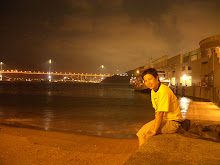 The basic roots and fundamentals of Aromatherapy can be traced back to nearly 3000 years before Christ, when the ancient Egyptians used the basics of Aromatherapy in their daily lives. The historical records show that Egyptians usually burned incense made from aromatic woods and other herbs to honor their Gods.
The basic roots and fundamentals of Aromatherapy can be traced back to nearly 3000 years before Christ, when the ancient Egyptians used the basics of Aromatherapy in their daily lives. The historical records show that Egyptians usually burned incense made from aromatic woods and other herbs to honor their Gods.Royal harems and guesthouses also used many aromatic oils very profusely to satisfy their important guests. Aromatherapy also has its roots in the most ancient healing and therapeutic practices. Medicinal plants are used to cure many ailments and used in many sacred rituals to evoke different states of consciousness.
The elaborate of religious ceremonies were performed in Egyptian temples, where the dead King was mummified and surrounded with the exotic essential oils. Egyptians believed very firmly that essential oils have an unusual preserving property when added with other spices.
Embalming was one of the principal uses of aromatherapy, preserving the tissue of the bodies for thousands of years. Where the oils and resins used were so potent, that in the 17th century, mummies were sold in Europe and doctors distilled them for use in their medicines research.
Aromatherapy was truly emerged from the smoky temples of Egypt 6,000 years ago. Egypt was the birthplace of medicine, pharmaceutics, cosmetics and also perfumery. It is thought that the Egyptians coined the term perfume, from the Latin per fumum which translates as through the smoke. Egyptian men of the time used fragrance as readily as the women. An interesting method that the men used to fragrance themselves was to place a solid cone of perfume on their heads. It would gradually melt and would cover them in fragrance.
Priestesses and priests strictly supervised the delicate preparations in the temples and palaces, reading formulas & chanting incantations and hymns, as substances were measured & combined with ultimate precision. Purification processes went on for months until the right and perfect subtle blend was achieved.
The use of aromatherapy spread from Egypt to Israel, China, India and the Mediterranean. Every culture, from the most backward to the most modern, developed own set of practices. Greek physicians and military surgeons were employed by the Romans every where in the empire. After the fall of the Roman Empire, the science spread to the Arab countries, where medicine men devoted them to the ancient art of alchemy, perfecting the art of distillation and extraction.
For many centuries essential oils were the only remedies for epidemic diseases and conditions. During the dreaded Black Plague, very few became ill, who in fact were associated with perfumeries and glove industries where these oils were in profuse use.
During the 19th century, with the development of modern science, all forms of herbal medicine disappeared until the 1920s, when French chemist Gatefosse revived the art, giving it the name Aromatherapy. India was one of the few countries where the tradition was never lost, Avurveda being the most ancient medical practice in the world today. Aromatherapy is now used in hospitals, offices, clinics and homes all over the world.
During the 20th century, the knowledge of separating the constituents of essential oils was used to create synthetic chemicals and drugs. It had been believed that by separating the major constituents and then using the constituents alone or in synthetic form would be beneficial therapeutically and economically. These discoveries helped lead to "modern medicine" and synthetic fragrances. This actually weakened the use of essential oils for medicinal and aromatic benefit.
Aromatherapy acts as a bridge between the new and old; most of the industries use these oils for various blends and concoctions, which provide cure and relief for a number of complications.

No comments:
Post a Comment